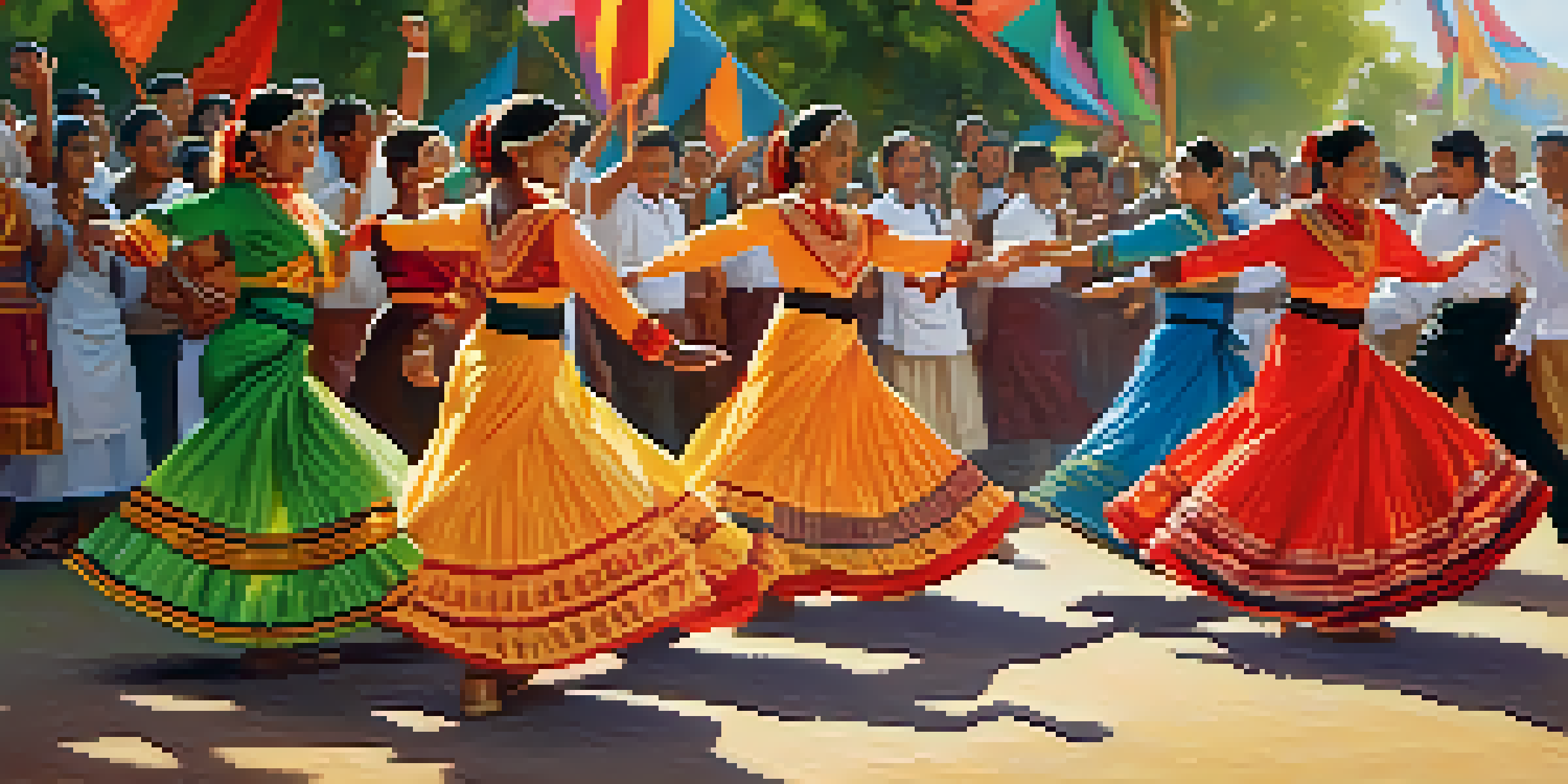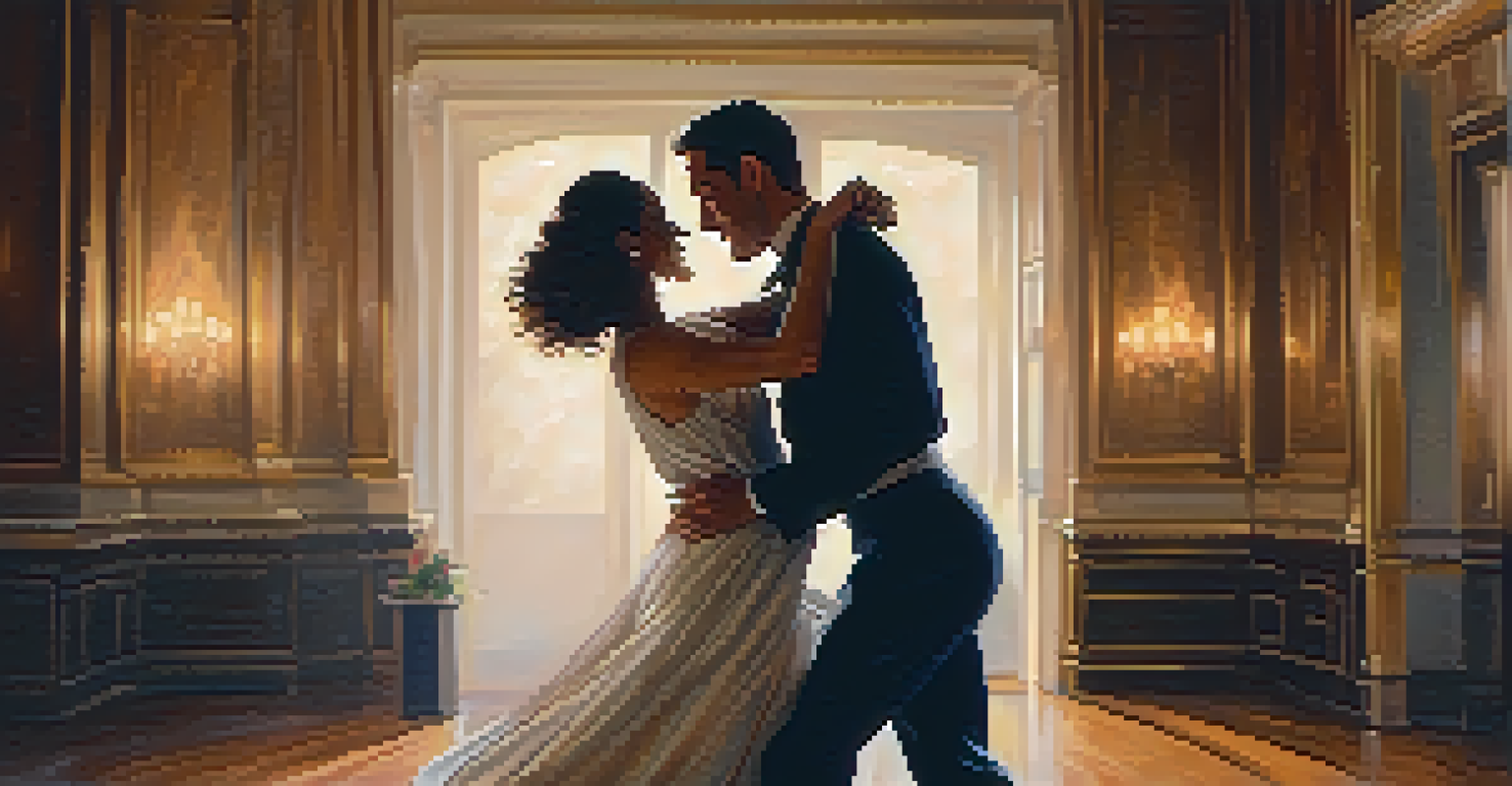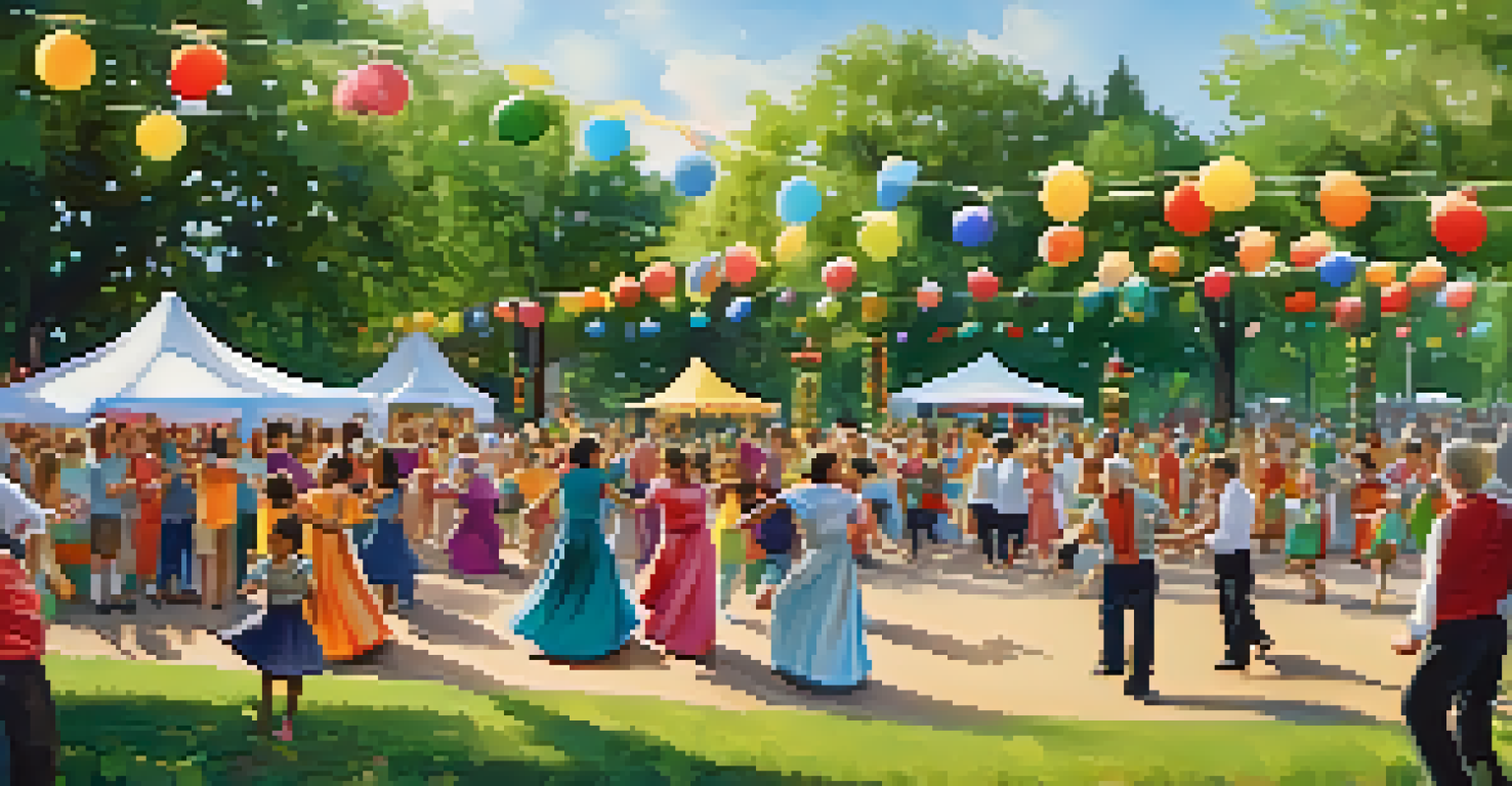Cultural Dance Forms as Tools for Promoting Physical Activity

Understanding Cultural Dance Forms and Their Benefits
Cultural dance forms are vibrant expressions of heritage that often tell stories through movement. These dances are not just art; they are also a fantastic way to engage in physical activity. By participating in these dances, individuals can enjoy the rhythm while reaping health benefits.
Dance is the hidden language of the soul.
From the spirited movements of Irish jig to the graceful sways of traditional African dance, each form offers unique physical challenges. Engaging in these dances can improve flexibility, strength, and cardiovascular health. It's like getting a workout without the monotony of a gym routine!
Moreover, cultural dance forms celebrate community and connection, making physical activity feel less like a chore. When people come together to dance, they foster social bonds, which can further enhance motivation and enjoyment in staying active.
The Role of Dance in Promoting Overall Well-Being
Participating in cultural dance can significantly boost mental and emotional well-being. The joy of expressing oneself through dance releases endorphins, which are natural mood lifters. This emotional uplift can lead to more consistent engagement in physical activity.

Moreover, dance encourages mindfulness, helping participants to be present in the moment. This focus can reduce stress and anxiety, creating a healthier mindset that supports a more active lifestyle. It's a holistic approach that nurtures both body and mind.
Cultural Dance Fosters Community Bonds
Participating in cultural dance creates social connections and promotes physical activity in a supportive environment.
Incorporating dance into daily routines can transform one's relationship with exercise. Instead of viewing physical activity as a task, it becomes a joyous celebration, making it easier to stick with in the long run.
Cultural Dance Forms: A Social Activity for All Ages
One of the best aspects of cultural dance forms is their inclusivity; they can be enjoyed by people of all ages. From children learning traditional folk dances to seniors participating in line dancing, everyone can find joy in movement. This intergenerational aspect fosters community spirit and encourages family bonding.
Dancing is like dreaming with your feet!
Classes and community events often bring people together, creating a fun environment for everyone. When friends and family engage in dance, it becomes a shared experience that promotes physical activity in a supportive setting. Plus, it’s a great way to learn about different cultures!
As more people join in, the energy builds, making the experience even more enjoyable. This collective participation can help individuals feel more accountable and motivated to maintain an active lifestyle.
Integrating Dance into Physical Education Programs
Schools can play a vital role in promoting cultural dance as part of their physical education curriculum. By introducing students to various dance forms, they can enjoy a fun and engaging way to stay active. This exposure can spark an interest in lifelong physical activity.
Dance programs can complement traditional sports, offering students diverse ways to express themselves physically. Incorporating elements of different cultural dances can also promote inclusivity and appreciation for diversity among students.
Dance Enhances Mental Well-Being
Engaging in dance releases endorphins, boosts mood, and encourages mindfulness, contributing to a healthier mindset.
Furthermore, integrating dance can help students develop coordination, balance, and rhythm, essential skills for overall physical development. It's an innovative approach to physical education that can inspire a love for movement.
Cultural Dance as a Tool for Community Engagement
Cultural dance events can serve as excellent opportunities for community engagement and awareness. Festivals and workshops dedicated to specific dance forms invite local residents to participate and learn. This not only promotes physical activity but also strengthens community ties.
As people come together to celebrate their cultural heritage, they share knowledge and experiences, creating a sense of belonging. This communal aspect fosters not just physical activity but also social connections that can enhance overall well-being.
Moreover, these events can inspire younger generations to embrace their cultural roots while staying active. The joy of dance becomes a bridge that connects communities, making physical activity a shared experience.
The Global Impact of Dance on Health Initiatives
Around the world, health initiatives are increasingly recognizing the value of dance as a form of physical activity. Programs that incorporate cultural dance are emerging, promoting health and fitness in enjoyable ways. This global perspective highlights dance as a universal tool for well-being.
Research shows that dance can be an effective way to address issues like obesity and mental health. By encouraging people to engage with cultural dance forms, organizations can foster healthier lifestyles in diverse populations.
Dance as a Fun Exercise Alternative
Incorporating dance into routines transforms physical activity from a chore into a joyous celebration.
Additionally, these initiatives often emphasize accessibility, ensuring that everyone, regardless of their background or ability, can participate. This inclusivity reflects the power of dance to bring people together while promoting health.
Personal Stories: Transformative Experiences Through Dance
Many individuals have found transformative experiences through cultural dance forms. For instance, someone who struggled with fitness may discover newfound confidence and joy in learning traditional dances. These personal stories highlight how dance can change lives by making physical activity enjoyable.
Participants often share how dance has helped them connect with their heritage and community. This connection not only promotes physical activity but also strengthens personal identity and pride in cultural background.

These narratives remind us that cultural dance is more than just movement; it's a journey of self-discovery and empowerment that encourages a healthier lifestyle.